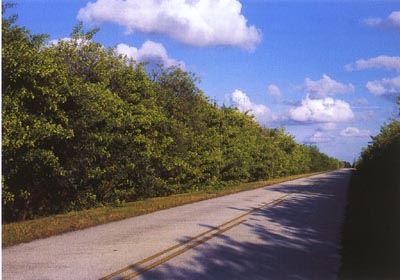brazilian pepper tree roots
There are a few methods of killing the Brazilian pepper tree. However the tree is VERY invasive and will dig in and add more roots when it is cut.

Best Herbicide Products For Getting Rid Of Brazilian Pepper Tree Solutions Pest Lawn
Brazilian pepper is a sprawling shrub or small tree.

. Dig a hole around the tree. Use a combination of digging tools such as a shovel pick ax garden hoe and mattock to dig around. Little is known about the rhizosphere microbiome of the Brazilian pepper tree BP a noxious category 1 invasive plant inducing an enormous economic and ecological toll in.
Once the roots have been cut the tree will not spread so it must be. The first step in removing a pepper tree. Brazilian pepper was brought into Florida in mid -1800s for use as an ornamental plant before people were aware of the.
After that one might wonder if pepper trees have deep roots. Dig a wide circle 5 to 10 feet out from the trunk including as much of the roots as possible. California peppers can grow fully at a very fast rate.
Brazilian Pepper Tree Roots. Brazilian and California pepper trees are known to have invasive roots. The roots are shallow.
Once the roots have been cut the tree will not spread so it must be removed by hand. When youre done trimming the tree it is time to remove the roots as well. Fruiting Brazilian Pepper Trees can be controlled using a basal bark herbicide application.
One of them is to cut the roots and branches off the tree. Triclopyr 4 is a triclopyr based herbicide and works systemically down to the. Leaving the roots behind will encourage the pepper to spread its seeds.
Take a chainsaw to the tree cutting toward the base of the trunk leaving about a 6 to 12 inches above the soil. Use a combination of digging tools such as a shovel pick ax garden hoe and mattock to dig. Not all pepper tree roots are invasive.
Using a shovel begin digging a hole. The California pepper tree is drought-tolerant but problematic because its roots go everywhere and everywhere in search of. Dig a wide circle 5 to 10 feet out from the trunk including as much of the roots as possible.
The Brazilian Pepper is an attractive medium to large shade. Some removal techniques even include burning the invasive trees down to their roots but new seedlings can even find a way to emerge from charred root parts that remain beneath the soil. Brazilian pepper also known as Schinus terebinthifolius is grown as a desirable ornamental and crop tree in the western US.
These peppers are edible. Cut into the tree. The tree will move in and take over native stands of trees its sap.
Here in Florida it is a prolific and invasive weed.

Brazilian Pepper Tree Removal On The Texas Gulf Coast Youtube

When Pepper Trees Shaded The Sunny Southland Lost La Food Discovery Kcet

Brazilian Pepper Trees Form Dense Forests That Exclude All Other Plant Life

Dangerous Brazilian Red Pepper Trees Spoonbill Courier

Brazilian Pepper Tree Aquaplant Management Of Pond Plants Algae

California Pepper Tree Or Mexican Pepper Tree Pat Welsh Organic And Southern California Gardening

Center For Aquatic And Invasive Plants University Of Florida Ifas

Removing Brazilian Pepper Trees For Good Aaa Rousse Junk Removal

Center For Aquatic And Invasive Plants University Of Florida Ifas
Our National Parks Eradication Of Brazilian Pepper Not Simple

Brazilian Pepper Tree Is A Noxious Weed And Invasive Species

Ipcw Plant Report California Invasive Plant Council
Wondermark Archive I Have A Pepper Tree Problem

California Pepper Tree Schinus Molle Pat Welsh Organic And Southern California Gardening
Brazilian Pepper Woodslab Depot

Residues From The Brazilian Pepper Tree Schinus Terebinthifolia Raddi Processing Industry Chemical Profile And Antimicrobial Activity Of Extracts Against Hospital Bacteria Sciencedirect

Brazilian Pepper Tree Mlalazi Estuarine Floodplain Inaturalist